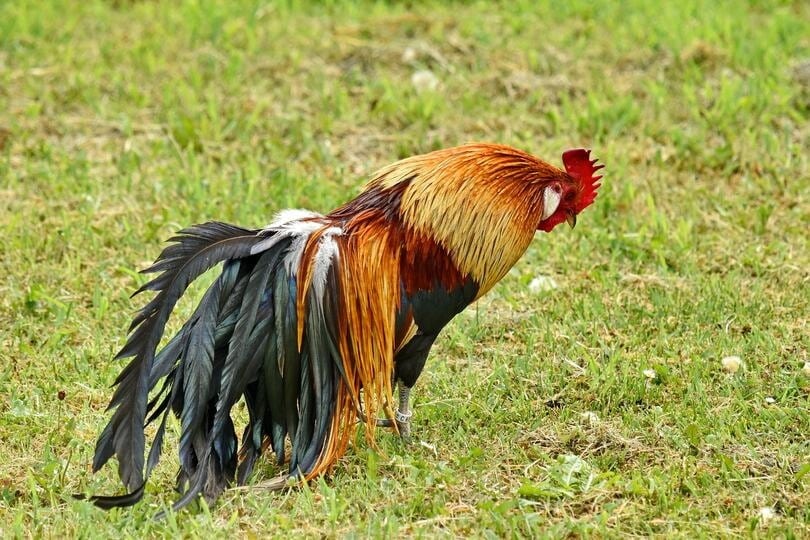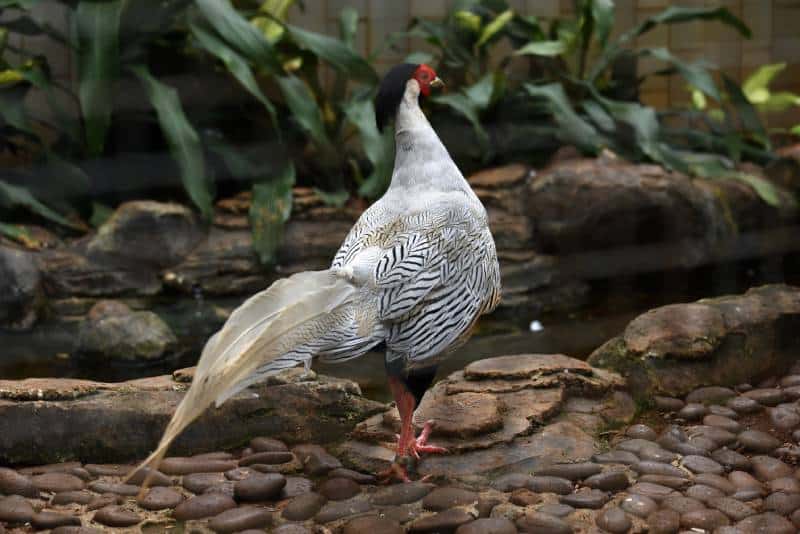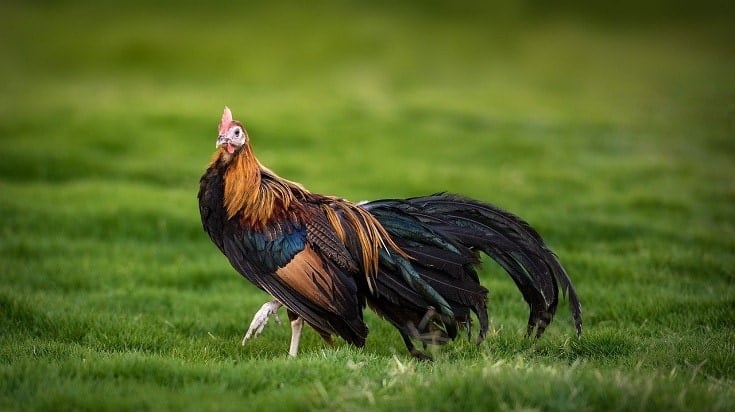If you’ve been looking to add a new chicken to your farm and have come across the Phoenix chicken, there are some things you should know about the breed before purchasing, mainly that the breed is an ornamental one and won’t be great for egg or meat production. However, if show birds are something you’re into, the Phoenix chicken will make a gorgeous addition.
These birds have long tails they get from their Japanese ancestors that make them unique. These long tails require a lot of time and care, though.
Read on to see if getting a Phoenix chicken would benefit you!

Quick Facts About the Phoenix Chicken
| Breed Name: | Phoenix Chicken |
| Place of Origin: | Germany |
| Uses: | Show |
| Rooster (Male) Size: | 5.5 lbs |
| Chicken (Female) Size: | 4 lbs |
| Color: | Silver, gold, white, black-breasted red, light brown, golden-duckwing, silver-duckwing |
| Lifespan: | 6 – 8 years |
| Climate Tolerance: | Prefers warm |
| Care Level: | High-maintenance |
| Egg Production: | 52 – 126 small eggs per year |
Phoenix Chicken Origins

Though the exact year isn’t known, the Phoenix chicken came about in the late 19th century as a creation of the first president of the National Germany Poultry Association, Hugo du Roi. To make the Phoenix, du Roi crossbred several Japanese long-tailed birds with European birds such as the Old English Game, Kruper, Leghorn, and Malay. This diversity in breeding means that there’s plenty of diversity in the Phoenix as well.
Though the Phoenix had been in the United States since the 1920s, it wasn’t until 1965 that the American Poultry Association Standard of Perfection acknowledged the silver Phoenix. The gold Phoenix was recognized in 1983. The latest to be accepted was the Black-breasted Red in 2017.

Phoenix Chicken Characteristics
Though the Phoenix chicken is quite docile, it isn’t the friendliest of birds. This breed is very stand-offish and a “lone wolf” who tends to keep to itself. However, if raised by hand, the breed is likely to be friendlier.
The breed’s temperament can also be affected by how good or bad its living arrangements are. Because the Phoenix has such a long tail, it needs to be kept in higher roosts. This gives the chickens room for feathers to grow and stay clean. The breed also requires higher perches because of its long nails. One excellent thing about the Phoenix is that it does well in confinement.
However, that doesn’t mean they don’t do equally well in a free-range system. The Phoenix breed makes for great foragers. They also have wonderful flight skills and are quite active.
Because the Phoenix has such a long tail, it will require special care to keep the feathers of the tail in good shape. For example, they’ll require extra protein to keep the tails growing and healthy. These tails also require the special housing described above—the Phoenix is fairly high-maintenance due to its looks!
Because this breed is used for show, you likely won’t be using them for eggs or meat. But if you’re so inclined, don’t expect much. The breed will only lay an egg or two a week, and because they’re so small, they won’t provide much meat.

Uses
The Phoenix is an ornamental chicken, meaning it is used for show. Makes sense considering its fancy appearance! Although you can technically also use the Phoenix for eggs and meat, it’s not really worth your time. The Phoenix chicken only lays 52–126 small eggs a year, and because they are so small (5.5 pounds or less), you won’t get much meat from them.
Appearance & Varieties
The Phoenix chicken comes in several color varieties, including silver, gold, white, black-breasted red, light brown, golden-duckwing, and silver-duckwing. However, the American Poultry Association only recognizes silver, gold, and black-breasted red.
The breed has a single comb with five upright points. Roosters’ combs are a medium size; hens are smaller. Combs are a bright red in color. Wattles are the same in color and size for the breed, with roosters having a medium size and hens a smaller size.
The Phoenix’s earlobes are white, oval-shaped, and a medium size in both roosters and hens (and resemble earrings). Eyes are a dark red-brown in color. The bird’s feet and shanks range in color from light blue to slate and are smooth and clean.
The most striking thing about the Phoenix chicken is its tail, of course, which can reach several feet in length!

Population/Distribution/Habitat
The Phoenix chicken breed is currently listed on the American Livestock Conservancy’s Priority List under “Watch”. “Watch” means the breed listed has less than 5,000 breeding birds in the United States, 10 or less primary breeding flocks, and approximately 10,000 or less birds in the entire world.
Are Phoenix Chickens Good for Small-Scale Farming?
As ornamental birds, the Phoenix chicken breed isn’t really great for small-scale farming. It could work if you want a chicken around to provide a few eggs for the family here and there. But considering how high-maintenance the breed is, the cost would likely greatly outweigh any benefits. We’d recommend going with a breed other than the Phoenix chicken for a small-scale farm.

Conclusion
While the Phoenix chicken is a gorgeous bird, it’s pretty high-maintenance to keep exactly because of that beauty. Keeping a long tail like that neat and healthy requires special care. And because this is a show bird, you won’t get a lot of benefit from it in the way of eggs or meat. Think carefully about whether a Phoenix chicken would be right for your farm before getting one!
Featured Image Credit: ArtistLens, Pixabay
